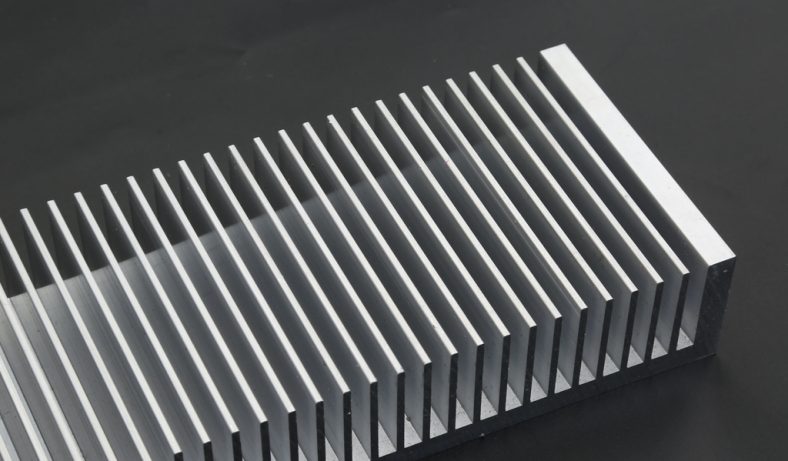
The Define Of Aluminum Profile Heatsink
Aluminum profile heatsink is also called heatsink aluminum profile or sun flower aluminum profile. Aluminum profile heatsink has the characteristics of beautiful appearance, light weight, good heat dissipation performance and good energy saving effect.
The surface of the processed aluminum heatsink is anodized for surface treatment to increase the corrosion resistance, wear resistance and appearance of the aluminum.
The types of heatsink aluminum profiles commonly used in China are: electronic, electrical, computer heatsink aluminum profiles, sunflower aluminum profile heatsinks, heatsink profiles for power semiconductors, etc.
Aluminum heatsinks are widely used in machinery, automobiles, wind power generation, construction machinery, air compressors, railway locomotives, household appliances and other industries because of their superior performance.
The Advantage Of Aluminum Profile Heatsink
Aluminum profile heatsinks mainly include high-pressure cast aluminum and stretched aluminum alloy welding. Its advantages are mainly:
- The heat dissipation of the aluminum heatsink is better, and the characteristics of energy saving are very obvious. In the same room, if the heatsink of the same specification is used, the number of aluminum castings is less than that of steel.
- The aluminum profile heatsink has good oxidation and corrosion resistance, and does not need to add any additives. The principle is that once aluminum encounters oxygen in the air, it will form an oxide film, which is tough and dense, preventing further damage to the body material. corrosion.
Choose aluminum heatsink, it is best to choose high-pressure cast aluminum module combined heatsink. This heatsink is a one-piece die-casting, so there is no problem of water leakage in the weld. And its biggest advantage is that the product is not limited by the district heating system, even in an open boiler system, it can not be corroded by oxygen. Due to the modular combined design, after a heating season, if it is found that the indoor temperature is not enough, the You can install an extra one or two in the second year to meet your needs, instead of having to replace the entire set of heaters like a steel heatsink.
In addition, since the requirements for water quality of aluminum heatsinks are different from those of steel, mixing installation of aluminum heatsinks with other materials should be avoided.
- First of all, please open the packaging of the aluminum radiator first, and install the air release valve and the union first.
- The position of the hole for installing the special hook can be drawn on the wall according to the provided installation drawing or related requirements.
- When installing the aluminum radiator, the damage caused by the thermal expansion and contraction of the radiator to the radiator should be considered.
- Put the 12 expansion tube in and lay it flat.
- Please use the impact drill to drill the hole 12, the depth should be flush with the wall after the expansion pipe is put in.
- Install the bottom hook, and tighten the screws when the requirements are met.
- Put the aluminum profile radiator on the hook that has been installed at the bottom, install the upper hook to adjust the position of the hook, and then tighten the expansion screw after it is clamped. When placing the radiator, place the air release valve on the top.
- After installing and assembling the pipe joint, install the pipe according to the requirements of the drawing and connect it with the water inlet and outlet, and fasten it everywhere. The rear side is 3.5cm away from the wall and 5cm away from the kicking line.
- Please input hot water, open the air valve, and release the air until the water comes out. The aluminum profile radiator shall not exceed the working pressure of 0.12Mpa.10 listed in the manual during operation. The oxygen content in the heat medium shall not exceed 0.05g per square meter. The medium water used for the radiator should meet the pH9≤9, and the pH≤12 when there are internal anti-corrosion measures.




